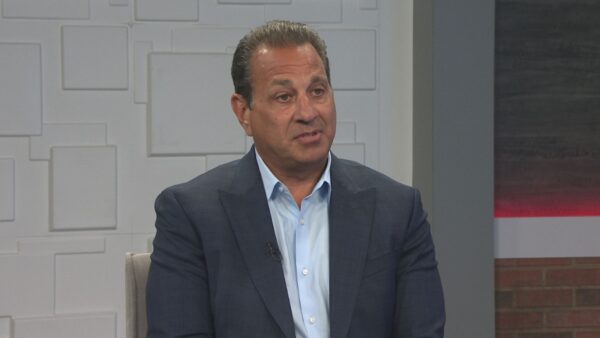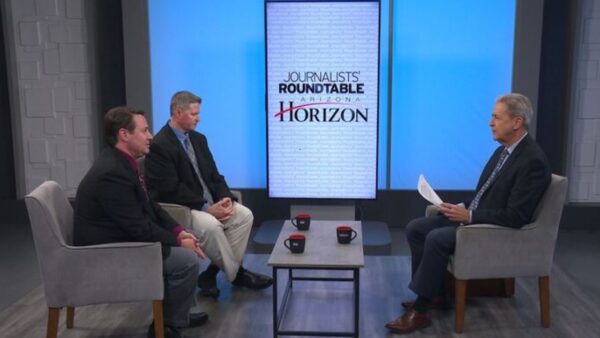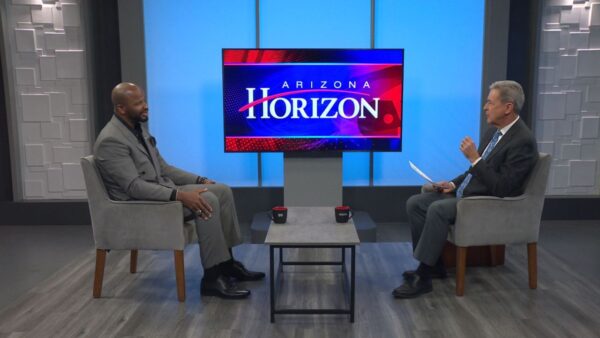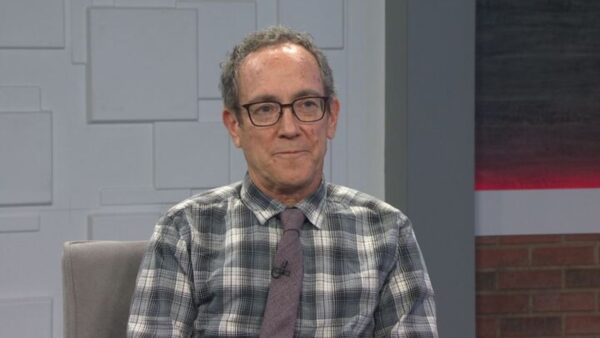Governor Jan Brewer vetoed a bill that would have required hospitals and other medical providers to list prices for common medical procedures. The Arizona Senate has revived the bill. Senator Nancy Barto, sponsor of the bill, will talk about her measure. Pete Wertheim, of the Arizona Hospital Association, will speak in opposition to the bill.
Ted Simons: Governor Brewer recently vetoed a bill that would have required medical providers to list direct-pay prices for common procedures. That bill has been revived with changes aimed at the Governor's veto language. Here to talk about the bill is its sponsor, state senator Nancy Barto. And speaking against the measure is Pete Wertheim, vice president of strategic communications for the Arizona Hospital and Health Care Association. Good to have you both here.
Pete Wertheim: Thank you.
Ted Simons: Let's start with, what exactly does this legislation do.
Nancy Barto: Well, health care is the only arena in which, when people are purchasing a health care service they have no idea what it's going to cost them. Basically, what it will do is ensure that people that are paying directly or cash without a third party can get that health care price, that cash price for the service that they are seeking.
Ted Simons: Why is that a bad idea?
Pete Wertheim: The Arizona hospital and health care association and Arizona hospitals, we do support pricing transparency. The idea sounds good and -- but transparent means it's real and distinct to the consumer. We just want to make sure if we are going to impose a very large mandate on a very heavily regulated industry that the consumer who is getting that information is going to get the best information possible.
Ted Simons: Is it difficult to get the best information possible?
Pete Wertheim: It is difficult. When you have every patient is different. Their clinical presentation varies so the costs may vary. They also have different payer sources, Medicaid, Medicare, different types of health plans and some have no ability to pay. There's a lot of variance that has to be accounted for to come up with one single price which we appreciate the goal. And I think we support that effort. We just need to come to terms on how to get there.
Ted Simons: What about the variables what when it comes to pricing? Can that be pinned down to where you have a sheet of paper and here's what you got to charge?
Nancy Barto: Sure. We do it every day with everything else that people purchase. And health care should be no different. Think about, health care really is changing. And now people didn't used to be able to care. When someone else is paying for your gallbladder surgery -- whether it costs you $35,000 at one hospital and maybe half as much at another, now more and more people are paying themselves for health care services for a variety of reasons. Number one, a lot more people are uninsured. And/or they have medical savings accounts where they have a pretty high deductible, sometimes, $10,000, 12,000 so they need to know how best to spend their own money.
Ted Simons: But what I don't understand is when you look at a hospital, even within the hospital, the same procedure doesn't necessarily have standard pricing. How do you get from there to a checklist or a price list, if you will?
Nancy Barto: Well, we are talking about two different things. We are talking about the cost of health care. We are just asking hospitals, health care providers to go through the iterative process of finding out what does it cost? What does it cost? Now, it doesn't mean that it's not going to increase for, let's say, a basic surgery, an OB situation, for instance, that if there are complications that cost won't rise. But what's the basic cost if you are paying directly for cash on your own dime?
Ted Simons: Why not include a standard price and take it from there?
Pete Wertheim: Well, it would be nice -- it sounds simple. But the problem is, if you are going to give somebody a price, you would like to have it be close to that actual price when they ultimately receive the bill. 150-pound patient versus a 400-pound patient getting an appear pen detective me, the variance is huge. The anesthesia used, so to put a single price on a procedure may not help the consumer at all. So we advise consumers, talk to the physician, check out your clinical circumstances and try to work that price out up front. That's the best way to do it.
Ted Simons: Can there be a price? It's almost like buying a car, if you will, docking fees. Can there be a price if you say, well, it looks like that's lower. You find out it may be different but at least you have something to go on, somewhere to hang your hat on.
Pete Wertheim: There's ways to get you in the ballpark. But the other problem with the legislation it's requiring every hospital to provide 50 of the most common in-patient and outpatient procedures. Hospitals are not identical. So these procedures may not be the kind of procedures that a consumer even has the luxury to shop for. Looking at a level I trauma center you are going to read about heart conditions, seizures, neurosurgery. That price menu is not going to be helpful when you look at it to another hospital. So the question is, is this helpful to the consumer if they can't compare common procedures that consumers typically have the luxury to shop for, comparing one hospital to the next?
Ted Simons: Please respond.
Nancy Barto: Well, I just -- I am baffled that people even opposed price transparency at any level. Consumers are smart enough to figure it out, what they want, they will ask the question. And if we just open the door for hospitals and health care providers to start with their most commonly provided procedures, the consumers will take it from there and then the free market will fill the gap.
Pete Wertheim: Well, I think that's an important point. The free market. I think we need to come up with those solutions as an industry and keep working at providing that. But to put an unfunded mandate in statute of this type on an industry, we are not convinced that this is going to be ultimately helpful to the consumer.
Nancy Barto: But we are trying to do, Pete --
Pete Wertheim: We can be progressive. Certainly with the Affordable Care Act there's hundreds and thousands of new regulations, payments are being changed to hospitals. So let's make sure we have something that's going to be ongoing worth our time and energy to put together all threes lists.
Nancy Barto: What we are trying to do with Senate bill 1115 now, a house bill since we did amendment it on to another bill and making the changes the Governor wants. What we are trying to do is create a free market in the health care industry. And people need transparent prices for that to happen. So we're just cracking open the door a little bit in order to get there.
Ted Simons: Does it worry you or bother you at all that some see this legislation as ignoring industry concerns? The industry doesn't want this. Doesn't like this. Does that impact your decision-making process at all?
Nancy Barto: Well, we are certainly open to make sure we are listening to the industry and working with them. And I think that's part of what the veto was all about was making sure that we addressed some of the practicalities. I think it was a fine bill going up to her but the Governor did have some good ideas. I think we are going to get a better bill out of it. But, you know, we have had a lot of input since we've proposed this idea. Across the country, people are acknowledging that transparent pricing in health care is absolutely what people need in order to make sure that the dollars that they are spending, they can spend wisely. I mean, we have people now that are very concerned about health care. I mean, they can't afford insurance. The cost of insurance is going up eight, nine, 10% a year. Their hours are being cut back. We heard last week Maricopa County, Maricopa community colleges are cutting back hours in order to comply with Obamacare. Those people are going to be uninsured. They need to make sure they are spending their health care dollars wisely.
Ted Simons: Something that helps folks manage health care needs, doesn't this do that?
Pete Wertheim: I would say if it doesn't provide meaningful information to the consumer, I think it falls short. I believe we can resolve these differences we have talked about today. But before we embark on the hours it takes to produce something for the consumer, let's take a step back and make sure this is actually something that consumers will use and it will be helpful to them. I think we can get to that goal. Right now the way the bill is constructed -- we don't want to go through all the effort to put this together and not see patients using this tool.
Ted Simons: All right.
Nancy Barto: It's certainly going to pay off.
Ted Simons: All right. Good to have you both here.
Nancy Barto: Thank you.
Ted Simons: Thanks for joining us. We appreciate it.
Nancy Barto:Senator, Arizona; Pete Wertheim:Arizona Hospital Association;




















